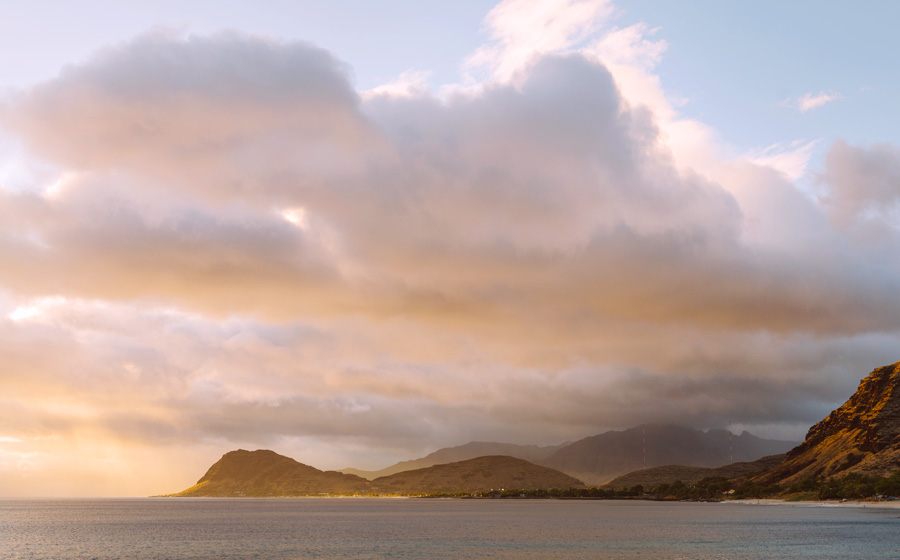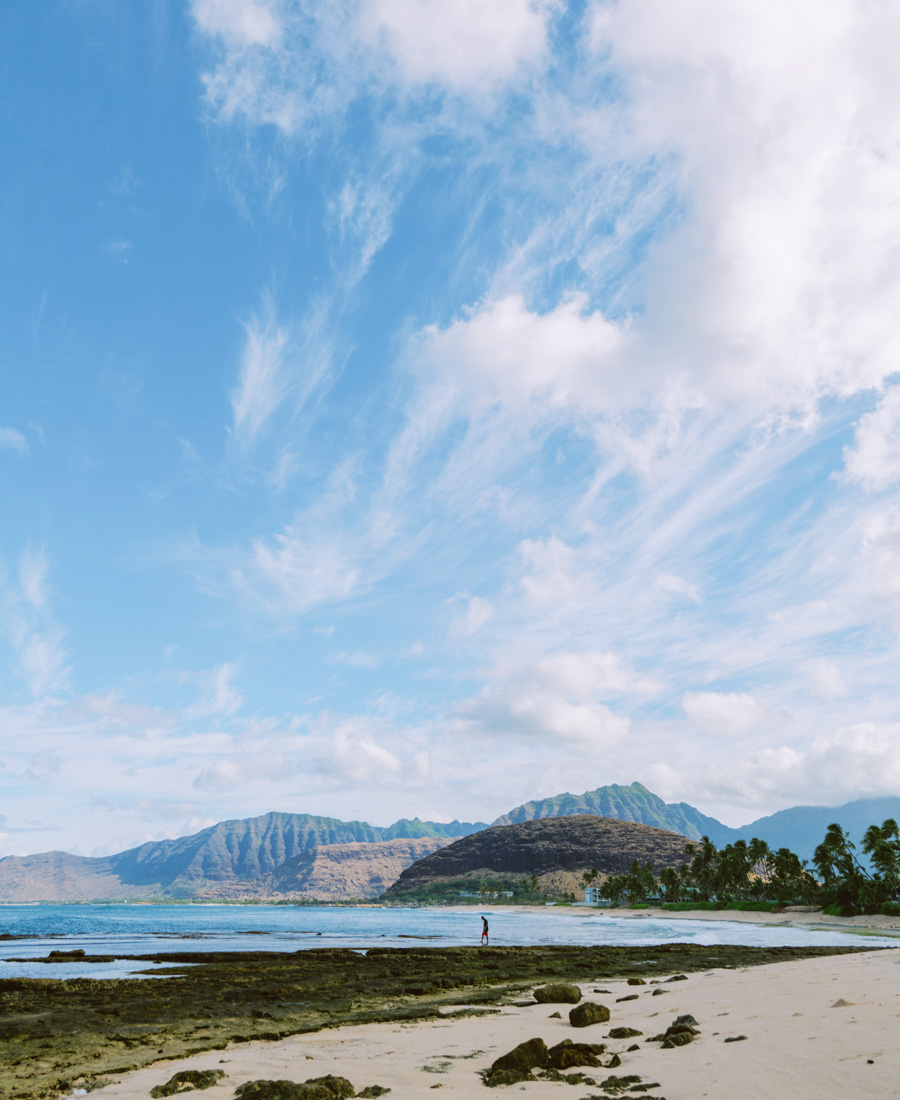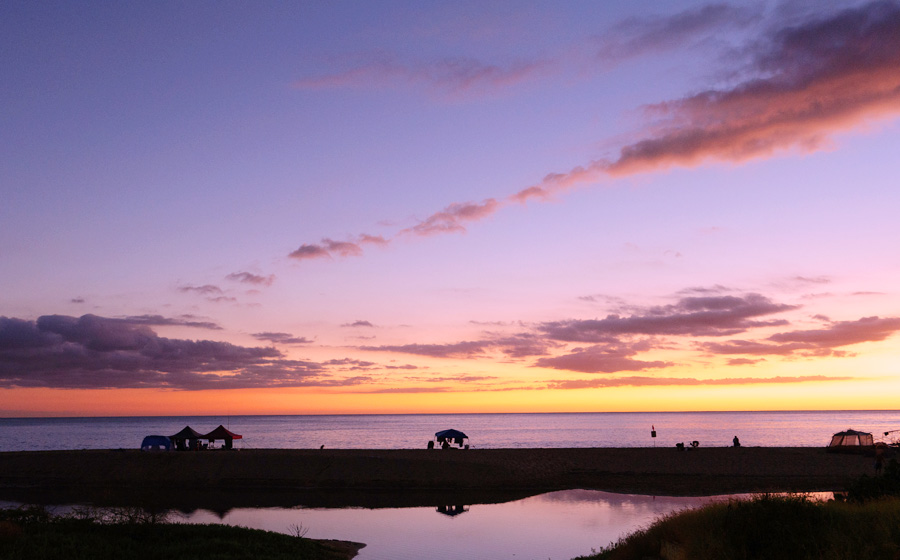To find both meaning and beauty, one needs only to gaze upwards.
Kānepūniu rains in the heat of the sun Then releasing the stauch weariness Swimming in Lualualei, the Ko‘olau breeze blows

Despite a reputation for hot, dry weather, Waiʻanae attracts rain and houses groundwater. “Wai,” in fact, refers to fresh water. Traditional poetry and lore speak to the famed wai o Lualualei, or the pools of Lualualei, that reframes Waiʻanae as a unique hydrological ecosystem. Laden with moisture, clouds bring rain and life to the West Side of O‘ahu.
High flies the cloud in the sky, lifted by the wind.

Huihui hōkū, or constellations, tether one's orientation in Oceania by providing a star map rich with navigational knowledge. The brilliance of Mākaha's night sky features Hōkūnohoaupuni (Milky Way); Ka Makau Nui o Māui, Māui's fishhook (Scorpio); and Pinao, a fish attracted by the hook.

Ka Lae ‘o Ka‘ena, or Ka‘ena Point, the westward tip of O‘ahu, serves as the historical boundary between Waiʻanae and Waialua on the North Shore. Prized by clandestine lovers for its remote locale, the area is said to ‘au i ke kai, or swim in the sea, a reference to the sea mist from mounting surf that wafts to the nose and dampens the skin.

Malolo kai ē! Low tide! Nui kai ē! High tide! At Kea‘au Beach, irregular patches of cloud sweep across the midday sky. Alongside nā ‘ōpua (clouds), waves and tides played an important role as metaphors in traditional Hawaiian society. One story recounts nā pōā o Mākaha, the thieves of Mākaha, who likened the size of the waves to the size of groups passing through their territory. Malolo kai ē, low tide, signaled a group small enough to rob. Nui kai ē, high tide, meant that there were too many people in the traveling party, and so theft was best avoided.
Lehua, a remnant crater-shaped islet located to the northwest of Ni‘ihau, serves as the westernmost anchor of the pae‘āina (archipelago). On clear days, the island of Kaua‘i is visible from high vantage points along the western coast, a reminder that the sun will soon set upon Lehua too.

No canoes remain in the shed when the weather is nice. For centuries, Hawaiʻi’s beaches have served as recreational areas for fishing, camping, swimming, singing, and playing music. As part and parcel of a local lifestyle, these pastimes will continue to be enjoyed on our islands’ coasts for generations to come.
